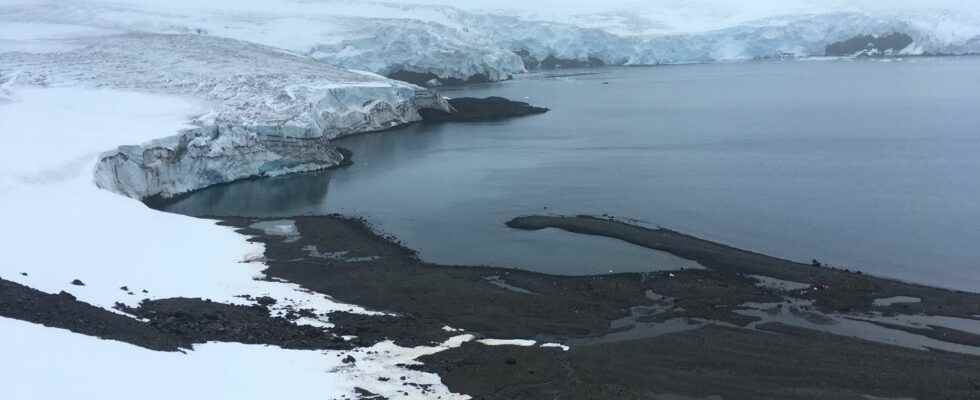Good news on the climate front, finally! Too often we chronicle our frantic and stubborn race towards the abyss, so, when a glimmer of hope presents itself, try to echo it. According to the conclusions of a group of experts sponsored by the United Nations, presented Monday, January 9, the hole in the ozone layer could be completely absorbed in the next four decades. And the icing on the cake: the progressive elimination of chemical substances that destroy it contributes to limiting climate change. This result is the fruit of unprecedented global cooperation which proves, if need be, that environmental negotiations can be effective when they are associated with a clear political and economic will. However, nothing was a foregone conclusion… quite the contrary.
It all started in the 1970s. Sounding balloons were sent into the stratosphere and showed a worrying gradual drop in ozone levels, particularly in Antarctica. The presence of this “hole”, which also appears periodically at the South Pole, proves what two chemists from the University of California had advanced in 1974: the destructive effect on ozone of industrial gases such as chlorofluorocarbons or CFCs. These gases are then widely used in the refrigeration and aerosol industry. After a first convention signed in 1985 in Vienna under the aegis of the UN, 24 States and the European Economic Community (EEC) signed the Montreal Protocol in 1987 – today ratified by 198 countries. The agreement, which came into force in 1989, provides for a 50% reduction in ten years in the use of CFCs and halon gas, another industrial gas that is dangerous for ozone.
The same year, a study revealed that the “hole” in the ozone layer had never been so large over Antarctica. Under pressure from public opinion and States, the major chemical firms agreed to quickly develop substitutes for CFCs that are not dangerous for the ozone layer. Still, some gases now used remain powerful greenhouse gases. Some hydrofluorocarbons (HCFs), which have replaced CFCs, have a greenhouse effect 14,000 times greater than that of CO2. In 2016, the Kigali agreement therefore provided for the gradual elimination of HFCs, used in refrigerators and air conditioners. If the agreement is respected, it could reduce global warming by 0.5°C by 2100, experts have already estimated. This text is, in a way, an offshoot of the Montreal Protocol. This is an important step because it is the first time that an international protocol has been amended for an objective, climate protection, different from the initial purpose of this protocol.
The Montreal Protocol, a model to follow
“Over the past thirty-five years, the protocol has become a real spearhead for environmental protection,” said Meg Seki, Executive Secretary of UNEP’s Ozone Secretariat. According to the scientists, without the protocol, ozone concentrations would have been so low by 2065 that people in the mid-latitudes of the Northern Hemisphere would have gotten sunburned within 5-10 minutes of exposure. In the United States, it is estimated that 443 million skin cancers and 63 million cataracts could have been prevented. The Montreal Protocol has also slowed down climate change by avoiding the emission of 135 billion tonnes of carbon equivalent between 1990 and 2010.
How to explain such a success for this Montreal Protocol? On the one hand, substitutes for substances that deplete the ozone layer (ODS) were quickly found, allowing industries to keep part of their usual processes. On the other hand, the text gave developing countries time to implement it. Thus, if the use of CFCs was banned in 1996 in developed countries, it was not until 2010 in the rest of the planet. In addition, the multilateral fund for the application of the Montreal Protocol was created in 1991 by the richest countries to support the others in their transition.
Thus, this Montreal Protocol served as a pioneer for climate agreements because it was the first time that countries agreed on a common action based on a scientific observation. Like what, with the will of States, industrialists and the population, a radical and rapid change in our habits on a planetary scale is possible. But let’s not kid ourselves too much. Uncertainties remain, and the progress made is regularly attacked. The important thing, here again, is to hold on and not let up on surveillance. For example, measurements have shown an upsurge, between 2012 and 2019, in emissions of CFC-11, which are nevertheless banned. Much of it has been attributed to factories in eastern China, and Beijing, under pressure from other countries, has taken steps to stop most of the emissions.
Since then, other substances have experienced unexplained emissions. The most worrying point lies in HFC-23, a greenhouse gas 14,800 times more powerful than CO2, whose emissions are eight times greater than those declared by the countries and are constantly increasing. Scientists cannot fully determine the cause, nor identify the countries responsible. The success of the Montreal Protocol is on the right track, but it deserves to be consolidated. A failure so close to the goal would be tragic for our planet, for humanity, but also for all future climate negotiations.
